#Organic npk fertilizer uses
Explore tagged Tumblr posts
Text
9 Best Organic NPK Fertilizers in 2024
In the world of gardening and farming, one term you’ll often come across is ‘NPK Fertilizer’. But what does it mean? And why is it so important? NPK stands for Nitrogen, Phosphorus, and Potassium, three vital nutrients that plants need to thrive. While there are many types of fertilizers available in the market, this blog post focuses on organic NPK fertilizers. Why organic, you ask? Organic NPK…
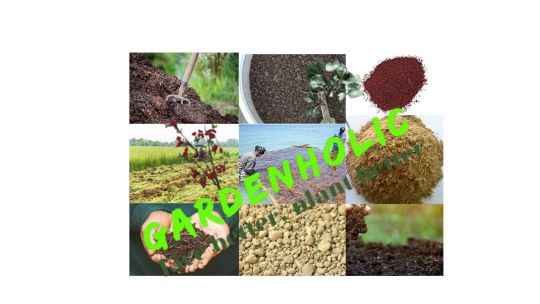
View On WordPress
#best organic npk fertilizer#conclusion of blog post#Gardening tips#how do chemical pesticides affect plants#How do you make natural NPK fertilizer at home?#how to apply natural pesticide#how to use organic pesticides around children and pets#natural fertilizers#natural pesticide#npk liquid fertilizer iffco#organic fertilizers#organic gardening#organic npk 19:19:19#organic npk fertilizer 50 kg price#organic npk fertilizer at home#organic npk fertilizer india#Organic npk fertilizer price#Organic npk fertilizer uses#resources for gardeners#What is NPK organic fertilizer?#Which is the best organic NPK fertilizer?#Which is the best organic NPK fertilizer? How do you make natural NPK fertilizer at home? Which organic fertilizer has the highest NPK? What#Which organic fertilizer has the highest NPK?
0 notes
Text
Understanding NPK Analysis in Different Types of Manure: A Guide for Farmers
Manure is one of the most cost-effective and environmentally friendly fertilizers available to farmers. However, not all manure is created equal. Understanding the nutrient composition—commonly expressed as NPK (Nitrogen, Phosphorus, Potassium)—is crucial for optimizing crop yields and soil health. Here’s a detailed breakdown of the NPK analysis for common types of manure, along with…
#chicken manure benefits#composting manure#cow dung farming#crop-specific fertilizers.#farmers trend#farming best practices.#goat manure fertilizer#manure NPK analysis#manure types comparison#nitrogen-rich manure#organic farming techniques#organic fertilizers#phosphorus in manure#pig manure composting#potassium in manure#rabbit manure nutrients#sheep manure uses#soil fertility tips#sustainable farming#vegetable farming fertilizer
0 notes
Text
On the Skidelsky/Fuller post I reblogged, I absolutely welcome automation given the following criteria:
1. The output is identical or, holistically, more positive than human labor output
2. This automation occurs within an economic system in which GDP growth (or similarly fraught metrics) is not the primary objective
3. The automation aids the sustainability of nature and humanity
The USA's agriculture industry is a wonderful example of modern automation failing all three of these criteria. Throughout the entire industrial revolution, agriculture has trended away from being a society-wide confederation of family/community-scale, labor-intensive smallholdings to our current reality of a small number of monolithic industrial farms that are maintained by astoundingly few people who operate increasingly complex and expensive equipment.
Our massive-scale industrial farms are fantastic at what they were designed for; they grow as much of a staple crop as possible without regard to human or environmental health, doing so using minimal labor. Fundamentally, it is an extractive industry. Fossil fuels are extracted to power the machinery, processing, and logistics systems. Nutrients are extracted from the soil to the point that crop growth can only be sustained with heavy amounts of industrial fertilizer input. Entire ecosystems are sacrificed when forests are cleared to be exploited and repeatedly battered with pesticides. This is all primarily to produce soybeans, feed corn, and cotton to then process into products like factory farm livestock feed-slurry, corn syrup, junk food, and sweatshop garments. Secondarily, it is to produce flavorless, nutrition-void produce that can be sold year-round. Consistency is the goal, although one may find that nature itself is curiously inconsistent.
This case study of automation's failings can be traced back to a few major factors:
1. Old-style agriculture work is disagreeable to the USA's perverted fascination for infinite GDP growth; each farm laborer that can be replaced by a machine is a potential worker that could move into a city (or suburb) and put in the same amount of hours at a higher-dollar job. It's just opportunity cost, and this is more-or-less what Skidelsky and Fuller find offensive about our current labor zeitgeist; instead of the now-jobless laborers being free to pursue their interests, they are instead shoehorned into some shitty desk job that produces a relatively greater amount of money to be leeched by executives and shareholders -- this is "more productive" to our economy on the basis of GDP growth and thus must be prioritized over agricultural labor.
2. Industrial approaches to large-scale agriculture are inherently reductive to an extreme extent. Nature is far more complex than Liebig or any other enlightenment thinker ever imagined. Industrialization is great at making cars or computer chips or Gucci jackets or whatever, as these are things that can be standardized with relative ease. Nature cannot be tamed and standardized in a similar way; ecosystems, particularly soil ecosystems, can vary massively even in small areas of the same climate type. Our agriculture systems cope with this simply by ignoring such factors and reducing crop growth to a formula. In X region, plant Y variety of Z crop on A date and apply a regimen of B-type fertilizer and C-type pesticide on D date etc etc. This is the most egregious reduction of something in all of history.
Liebig's reduction of agriculture to the NPK model, just three elements, is good for achieving the singular goal of making your plant of choice come out of the ground, but it ignores all the nuance of soil, climate, and evolution. The other factors don't matter. Modern lab-designed fertilizers often feature a plethora of additional micronutrients, but the goal is still to produce a healthy crop, not healthy soil. Soil itself is an organism, it is something that must be nurtured to be healthy; industrial pesticide/fertilizer regimens are to the soil as feed slurry/antibiotic regimens are to factory farm animals.
Natural processes are, itself, the greatest form of automation for agriculture. Plants and animals that are native to a region have evolved to grow there regardless of human intervention. It is our disruption of these processes that forces agriculture to be labor/resource-intensive. This isn't to say that everyone must immediately abandon all non-native foods and adopt a primarily undomesticated Ötzi diet, but instead, it's worth considering that the complexity of modern technology is not even close to being at parity with the complexity of nature; nature has a several billion year head start. There is no way to flawlessly "tame" it with technological solutions, but a comfortable middle ground can certainly be found.
If sustainable, climate-friendly food production is the primary objective of agriculture, this is far more easily achieved by small, ecology-considerate farms than massive, largely automated industrial farms. A healthy soil ecosystem will aid in growth, flavor, nutrition, and, (quite importantly) carbon sequestration. Broadforking, shoveling, and wheelbarrow-pushing is absolutely more labor intensive than sitting back in a huge John Deere tractor with GPS-based autopiloting features, but the extra labor can turn a woefully extractive process into one that is instead highly regenerative.
20 notes
·
View notes
Text
Comprehensive Guide to Soil Improvement for Gardening
Soil improvement, also known as soil amendment or soil conditioning, is an essential practice for gardeners seeking to cultivate healthy, productive plants. This process involves enhancing the physical and chemical properties of soil to create an optimal growing environment. Good soil is the foundation of a thriving garden, as it provides plants with the necessary nutrients, water, and structure to grow vigorously. This article delves into the importance of soil improvement, the various methods available, and practical steps to enhance your garden soil.
Why Soil Improvement is Crucial The quality of soil directly influences the health and productivity of plants. Poor soil conditions can lead to weak growth, nutrient deficiencies, and increased susceptibility to pests and diseases. Conversely, well-improved soil can significantly boost plant health and yield. Here are the primary benefits of soil improvement:
Enhanced Nutrient Availability: Soil amendments increase the availability of essential nutrients needed for plant growth.
Better Soil Structure: Improved soil texture aids in root penetration, air circulation, and water retention.
Increased Water Retention: Amended soil can hold moisture more effectively, reducing the need for frequent watering.
Improved Drainage: Good soil structure prevents waterlogging and root rot, ensuring proper aeration.
Enhanced Microbial Activity: Healthy soil supports beneficial microorganisms that aid in nutrient cycling and plant health.
Key Methods of Soil Improvement Adding Organic Matter
Compost: Incorporating compost into your soil enriches it with organic matter, improving structure and providing essential nutrients. Compost is made from decomposed plant materials and kitchen scraps, making it a sustainable option for soil enhancement.
Mulching: Applying a layer of organic mulch, such as straw, wood chips, or leaves, on the soil surface helps retain moisture, suppress weeds, and eventually decomposes to add organic matter to the soil.
Manure: Well-rotted animal manure adds nutrients and organic matter, enhancing soil fertility and structure. Manure should be properly composted to avoid introducing pathogens or weed seeds. Adjusting Soil pH
Lime: Used to raise the pH of acidic soils, making them more alkaline and improving nutrient availability. Lime should be applied according to soil test recommendations.
Sulfur: Applied to lower the pH of alkaline soils, making them more acidic and suitable for acid-loving plants. Sulfur should also be used based on soil test results.
Nutrient Enhancement
Organic Fertilizers: Products like bone meal, blood meal, and fish emulsion provide slow-release nutrients and improve soil health. These fertilizers are derived from natural sources and decompose slowly, providing a steady supply of nutrients.
Inorganic Fertilizers: These are concentrated sources of specific nutrients like nitrogen, phosphorus, and potassium (NPK), essential for plant growth. Inorganic fertilizers are fast-acting and can quickly correct nutrient deficiencies.
Micronutrients: Adding trace elements such as iron, manganese, and zinc can correct deficiencies and promote plant health. Micronutrients are essential for various physiological functions in plants, even though they are required in small amounts. Improving Soil Structure
Aeration: Techniques like tilling, spading, or using a garden fork to break up compacted soil enhance air and water movement. Aeration prevents soil compaction and promotes root growth.
Amendments: Materials such as sand, perlite, or vermiculite can be added to improve drainage in heavy clay soils or increase water retention in sandy soils. These amendments modify soil texture, making it more suitable for plant growth. Using Cover Crops
Green Manure: Planting cover crops like clover, alfalfa, or rye can improve soil structure, add organic matter, and increase nitrogen content when tilled into the soil. Cover crops also help prevent soil erosion and suppress weeds.
Practical Steps for Effective Soil Improvement
Conduct a Soil Test: Start with a soil test to determine the pH, nutrient levels, and texture of your soil. This information will guide your amendment choices. Soil tests can be done through local cooperative extension services or private laboratories.
Choose the Right Amendments: Based on the soil test results, select appropriate amendments to address deficiencies and improve soil structure. Organic matter, lime, sulfur, and specific fertilizers should be chosen according to the needs of your soil and plants.
Apply Organic Matter Regularly: Regularly add compost and mulch to maintain soil health and fertility. Organic matter improves soil structure, enhances nutrient content, and supports beneficial soil organisms.
Adjust Soil pH as Needed: Use lime or sulfur to correct pH imbalances, ensuring optimal nutrient availability for your plants. Proper pH ensures that plants can absorb the nutrients they need from the soil.
Fertilize Appropriately: Follow recommendations for fertilizing, considering both macro- and micronutrients. Avoid over-application, which can harm plants and the environment. Slow-release fertilizers are often preferable as they provide a steady supply of nutrients.
Improve Soil Structure: Use mechanical aeration and add structural amendments to enhance soil texture and drainage. Regularly turning the soil and adding coarse materials like sand or perlite can prevent compaction and improve root growth.
Plant Cover Crops: Incorporate cover crops into your gardening routine to naturally improve soil health and fertility. Cover crops also help manage weeds, reduce erosion, and enhance soil organic matter.
Regular Monitoring and Maintenance: Continuously monitor soil conditions and plant health. Make adjustments as needed to maintain optimal soil quality. Regular soil testing can help track changes and guide future amendments.
Learn More : Comprehensive Guide to Soil Improvement for Gardening 4 Soil improvement method
Conclusion Soil improvement is a foundational practice in gardening that ensures your plants have the best possible environment to grow. By understanding and implementing soil amendment techniques, gardeners can create rich, fertile soil that supports robust plant health, increases yields, and reduces the need for chemical interventions. Regular soil testing, adding organic matter, adjusting pH, enhancing nutrients, and improving soil structure are all essential steps in achieving a thriving garden. Investing time and effort into soil improvement pays off with a beautiful and productive garden that is resilient and sustainable.
Through careful management and consistent improvement, gardeners can transform even the poorest soils into rich, productive growing mediums. Whether you are a novice gardener or an experienced horticulturist, soil improvement is key to unlocking the full potential of your garden. Embrace these practices, and watch your garden flourish.
2 notes
·
View notes
Text
How about the development of NPK fertilizer granulator
The development of NPK fertilizer granulator shows the following characteristics and trends:
1. Technological innovation and process optimization: In order to meet different raw material characteristics and product requirements, new granulation processes continue to emerge.
2. Equipment structure optimization: the structural design of the granulator is developing in a more compact and reasonable direction. Using modular design concept, the equipment is divided into a number of functional modules, such as feeding module, granulation module, screening module, etc., to facilitate the installation, commissioning, maintenance and upgrade of the equipment.
3. Environmental protection and sustainability, environmental protection materials and technology application: With the improvement of environmental protection requirements, the production and use of fertilizer granulator pay more attention to environmental protection and sustainability. Organic fertilizer equipment uses more environmentally friendly materials and technologies to reduce the impact on the environment.
4. Reduce energy consumption: By optimizing the transmission system of the equipment, using efficient and energy-saving motors and reducers, reduce the energy consumption and noise during the operation of the equipment, and achieve an overall improvement in the performance of the equipment.
5. Market demand and prospects: With the development of global agricultural machinery technology and new material technology, as well as the increasing demand for high-quality fertilizer granulators, the fertilizer granulator market will continue to grow.
Conclusion In summary, in the future development of NPK fertilizer granulator, technological innovation will be the core, and it will continue to develop in the direction of efficient production, environmental protection and energy saving, intelligent upgrading and adapting to diversified market demand. Through new granulation process research and development, equipment structure optimization, reduce energy consumption technology application, intelligent control and personalized customized services and other measures to improve the performance and quality of the granulator, promote the sustainable development of the fertilizer industry.

0 notes
Text
What should we pay attention to in the production process of NPK fertilizer production line
In the production process of NPK fertilizer production line, the following key matters need to be paid attention to to ensure product quality, production efficiency and environmental protection requirements:
1. Product quality control, moisture control: the moisture content of fertilizer has an important impact on its storage and caking.
2. Particle strength and size: Insufficient particle strength will lead to fragmentation during transportation and storage, increasing the risk of caking. Relatively large particles can reduce the tendency to caking.
3. Production process optimization and ingredient accuracy: ingredient is a key link in the production system, which directly affects product quality and raw material consumption. The instability of manual measurement should be avoided, and automatic measurement equipment should be used.
4. Environmental protection requirements: the exhaust gas of the production line needs to be dedusted, and a cyclone or bag dust collector can be used to ensure that the exhaust gas meets the emission standards.
5. Dust management: Dust generated in the production process should be treated by dry dust removal technology to reduce workshop dust pollution.
6. Equipment and process management: The layout of organic fertilizer equipment should be reasonable to ensure that materials can still flow smoothly when the system is abnormal.
7. Equipment maintenance: Check the wear of the equipment regularly and replace the wearing parts in time to ensure the stable operation of the equipment.
8. Operator quality: operators need to have certain professional skills to meet the stable operation requirements of the production line.
9. Packaging management: Finished fertilizers need to be weighed and packaged by automatic packaging scales to ensure packaging quality.
By strictly controlling the above links, the production efficiency and product quality of the nitrogen, phosphorus and potassium fertilizer production line can be effectively improved, while meeting the requirements of environmental protection and reducing the risks in the production process.

0 notes
Text
How to choose more intelligent fertilizer production machine?
In the context of environmental protection policies, the fertilizer production industry is facing unprecedented changes. How to meet the requirements of environmental protection while improving production efficiency and product quality has become an urgent problem for many fertilizer enterprises. The choice of more intelligent fertilizer production machine is undoubtedly the key.
Organic fertilizer production line, as a representative of green production, its importance is becoming increasingly prominent. It can not only effectively treat all kinds of organic waste, transform it into efficient organic fertilizer, but also reduce environmental pollution and realize the recycling of resources. At present, the environmental protection policy is becoming stricter, investing in advanced organic fertilizer production lines is undoubtedly a wise choice for enterprises to comply with the trend of The Times and achieve sustainable development.
The intelligent upgrading of fertilizer production lines is also imperative. Through the introduction of automated control systems and Internet of Things technology, fertilizer production lines can achieve precise dosing, continuous production, and real-time monitoring, which greatly improves production efficiency and product quality. At the same time, the intelligent fertilizer production line can also flexibly adjust the production plan according to market demand, reduce production costs, and enhance the competitiveness of enterprises.
As one of the key machine of fertilizer production, the performance of fertilizer granulator directly affects the appearance and quality of fertilizer products. When selecting fertilizer granulator, attention should be paid to the durability, stability and production efficiency of the machine. At the same time, taking into account the environmental requirements, should also choose those low energy consumption, low emissions granulator to reduce the pressure on the environment.
NPK fertilizer production line is the core of compound fertilizer production. Under the environmental protection policy, the NPK fertilizer production line needs to pay more attention to the rational use of raw materials and the disposal of waste. Through the use of advanced production technology and machine, NPK fertilizer production line can achieve high efficiency, low consumption, environmental protection production goals, for enterprises to bring considerable economic and social benefits.
In short, under the environmental protection policy, choosing more intelligent fertilizer production machine is the only way for fertilizer enterprises to achieve green development. Through the introduction of advanced organic fertilizer production lines, intelligent fertilizer production lines, efficient fertilizer granulators and environmentally friendly NPK fertilizer production lines, fertilizer companies will be able to better adapt to market demand and achieve sustainable development.
0 notes
Text
Analysis of NPK fertilizer granulator
In the process of agricultural modernization, NPK fertilizer has become the core booster for increasing crop yields due to its balanced ratio of nitrogen, phosphorus and potassium. Granulator is the key equipment for NPK fertilizer production, so choosing a suitable granulator is particularly important in production. Disc Granulator and Rotary Drum Granulator are the more common granulating equipment in NPK fertilizer production. Today we will learn about them in detail.
In the process of NPK fertilizer production, Disc Granulator and Rotary Drum Granulator have different application scopes:
If you are starting small-scale NPK fertilizer granule production,Disc Granulator is usually selected. The granulation rate of Disc Granulator can reach more than 80%, that is, when the same amount of N, P, and K is used to prepare fertilizer granules, the Disc Granulator needs to return relatively less materials for re-preparation, so it can effectively complete small-scale NPK fertilizer granulation.
If you are starting large-scale production of NPK fertilizer granules, Rotary Drum Granulator is usually selected. This is because the Rotary Drum Granulator has a larger capacity, can work continuously, has a large production capacity, can process a large amount of raw materials in a short time, and can meet the needs of large-scale production.

In the production process of NPK fertilizer, the advantages of Disc Granulator and Rotary Drum Granulator are also obvious.
1. High production efficiency
Continuous work: The Disc Granulator has three outlets and can work continuously, which improves the average production capacity. The Rotary Drum Granulator has a large production capacity and can process a large amount of raw materials in a short time to meet the needs of large-scale production.
Efficient mixing: Both can fully mix raw materials with different nutrients such as nitrogen, phosphorus, and potassium to ensure that each compound fertilizer contains balanced nutrients, providing a guarantee for the production of high-quality NPK fertilizers.
2. Good product quality
Uniform particles: Our granulators all use granulation disks processed by unique technology, and the particles are regular in shape, which is convenient for storage, transportation and fertilization operations.
Balanced nutrients: By fully mixing the raw materials, the uniform distribution of nutrients in the fertilizer can be ensured, so that crops can obtain a comprehensive and stable supply of nutrients after fertilization.
3. High operational flexibility
Applicable to a variety of raw materials: Not only suitable for the production of NPK fertilizers, but also for the granulation of various fertilizers such as organic fertilizers, with a wide adaptability to raw materials.
Strong adjustability: The desired particle diameter can be obtained by manually adjusting the disc angle or the moisture content of the raw materials to meet different production needs.

With the growing demand for NPK fertilizers in agriculture, the use of efficient and suitable NPK fertilizer granulators can not only enhance product competitiveness, but also inject strong momentum into green agriculture.
0 notes
Text
How to choose the right conveying machine according to the size of the site?
For fertilizer production, conveying machine is the link connecting all links, and whether the choice is appropriate directly affects the production efficiency and cost, especially when closely matched with fertilizer granulator and organic fertilizer production line. According to the size of the site to select suitable conveying machine, is the key of the key.
Small site, limited space, fertilizer granulator and organic fertilizer production line layout compact. The belt conveyor is the ideal choice, its body is light, small footprint, flexible bending, can snake in a small space, accurate docking pelletizer inlet and outlet and production line processes. Simple hanging or small mobile belt conveyor, easy to adjust the position according to the production process, to meet the different batches of material conveying, effective use of every inch of space, to avoid the production stagnation caused by material accumulation.
Medium-sized sites, with a certain display space, at this time the pipe chain conveyor emerging. It has a compact structure, breaks through the limitations of two-dimensional transportation, can be turned arbitrarily in three-dimensional space, cleverly avoid obstacles such as plant pillars and machine, and smoothly transport the particles produced by the fertilizer granulator to the subsequent section of the organic fertilizer production line. Sealed pipeline design, not only dust and noise reduction, but also reduce material loss, vertical, horizontal, inclined multi-angle transmission, perfect fit for the complex layout of medium-sized sites, to ensure the smooth and efficient flow of materials.
Large venues, ample space, the transmission efficiency requirements are extremely high. Bucket elevator to show their skills, large throughput, high lifting height, can quickly raise a large number of fertilizer particles from the low granulation area to the high storage or packaging area, and large-scale organic fertilizer production line majestic capacity match. It is durable, can run stably for a long time, with intelligent control system, accurate feed, to ensure the entire production rhythm.
In short, no matter the size of the site, select the right conveying machine, so that the fertilizer granulator and the organic fertilizer production line can work together, in order to create an efficient and smooth fertilizer production kingdom, inject strong impetus for the vigorous development of enterprises, and lead the way in the fierce market competition.
#organic fertilizer production line#organic fertilizer production lines#drum fertilizer dryer#fertilizer granulator
0 notes
Text
Rising Global Food Demand Fuels Growth in the Fertilizers Market
Growing Global Food Production Needs and Soil Health Concerns Drive Growth in the Fertilizers Market.

The Fertilizers Market Size was valued at USD 274.6 Billion in 2023 and is expected to reach USD 389.6 Billion by 2032, growing at a CAGR of 4.0% over the forecast period 2024-2032.
The Fertilizers Market plays a crucial role in global agriculture by enhancing soil fertility and boosting crop yield to meet the rising food demands of a growing population. Fertilizers—both synthetic and organic—provide essential nutrients such as nitrogen, phosphorus, and potassium (NPK) to plants, making them vital in modern farming. With advancements in precision farming and a shift toward eco-friendly alternatives, the market is witnessing significant transformation and expansion.
Key Players:
Nutrien Ltd.
Yara International ASA
The Mosaic Company
CF Industries Holdings, Inc.
Israel Chemicals Ltd (ICL)
EuroChem Group AG
Coromandel International Ltd.
OCI Nitrogen
K+S Aktiengesellschaft
Haifa Group
Future Scope & Emerging Trends:
The future of the Fertilizers Market is tightly linked to global food security, climate change, and sustainability goals. Key trends include the development of bio-based and slow-release fertilizers, which reduce environmental impact while maintaining efficiency. Digital agriculture technologies, such as IoT-based soil health monitoring and AI-driven nutrient management, are expected to revolutionize fertilizer application. Additionally, emerging markets in Africa, Southeast Asia, and Latin America are projected to drive demand due to increasing agricultural activity and food demand. Governments and international organizations are also supporting green agriculture policies, promoting innovation and investment in sustainable fertilizer solutions.
Key Points:
Fertilizers are essential for crop productivity and food security.
The market includes a mix of synthetic, organic, and specialty fertilizers.
Sustainability and environmental regulations are driving innovation in the sector.
Growing adoption of precision agriculture and smart farming tools.
Asia-Pacific leads in market share, with strong demand from India and China.
Conclusion:
As the global population continues to rise, the Fertilizers Market remains a cornerstone of modern agriculture. Innovations focused on sustainable nutrient management, combined with increased awareness of environmental concerns, are set to reshape the industry. With significant growth potential in both developed and developing regions, the fertilizer sector is poised to support the next generation of agricultural efficiency and sustainability.
Read Full Report: https://www.snsinsider.com/reports/fertilizers-market-3507
Contact Us:
Jagney Dave — Vice President of Client Engagement
Phone: +1–315 636 4242 (US) | +44- 20 3290 5010 (UK)
#Fertilizers Market#Fertilizers Market Size#Fertilizers Market Share#Fertilizers Market Report#Fertilizers Market Forecast
0 notes
Text
How can NPK production lines reduce energy consumption
Reducing energy consumption in NPK fertilizer production line is an important way to achieve sustainable development and reduce production cost. Here are some effective strategies and methods:
1. Optimize the production process: optimize the reaction conditions and equipment design to reduce the temperature requirements in the production process.
2. The introduction of energy-saving equipment: the use of efficient organic fertilizer dryers and efficient organic fertilizer granulators, these equipment can reduce energy consumption by optimizing the mechanical structure and power system.
3. Intelligent and automatic control Internet of Things and automation system: The sensor data is combined with the automatic control system through the Internet of Things technology to monitor and adjust the parameters in the production process in real time to ensure that the equipment runs in the best condition.
4. Energy management system: Through the energy management system, the energy consumption of the production line is monitored and analyzed in real time to optimize energy distribution and reduce unnecessary energy consumption.
5. Optimize the production process and reduce the energy consumption of the material crushing link: adopt efficient crushing equipment, such as chain crusher or dust-free cage mill, to reduce the energy loss in the crushing process.
6. Policy support and technology upgrading, government subsidies and policy support: Use the government's subsidy policies for energy conservation, emission reduction and sustainable agriculture to reduce the cost of energy-saving equipment and technology upgrading.
7. Continuous technological innovation: pay attention to the latest technological progress in the industry, and introduce energy-saving new equipment and new processes in a timely manner.
Through the above measures, NPK fertilizer production lines can reduce energy consumption at the same time, improve production efficiency and product quality, and achieve sustainable development.

0 notes
Text
Arabian Jasmine
ARABIAN JASMINE
Arabian Jasmine flowers are king of fragrant flowers. Jasmine are of more than 200+ varieties around the world. But Arabian jasmine occupies the remarkable place for strong fragrance & layered flowers. Jasmine is belonging to genus Jasminum and family Oleraceae.

Arabian jasmine flower
This Arabian jasmine flowers are bright white, double layered, tubular, lobed oval flowers contain 9 to 10 petals has sweet & strong fragrance throughout your garden. Flowers contains two stamens with very short filaments.
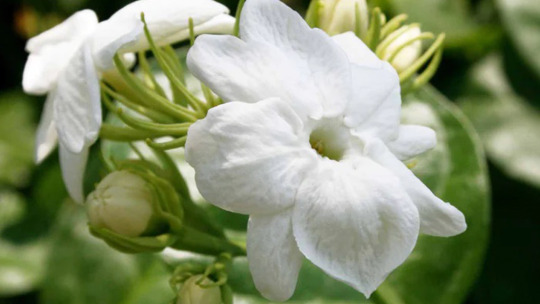
Arabian jasmine plant
Like all jasmine plant varieties, this plant is perennial evergreen with thin woody branches. Arabian jasmine plants are small shrubs with lush foliage. And its climber vines reach up to the height of 25-30 cm & spreads wide 10-20 cm. Arabian jasmine plants are native to Asia, grows healthy & excellent in all climatic conditions of India.

Jasminum sambac
Arabian jasmine flower has scientific name Jasminum sambac spreads rapidly as shrub or veins with upright habits. Jasminum sambac is popularly called as “Belle of India” meaning Queen of India. Presence of Scent fragrance refreshes the mind & environment.

How to grow Arabian jasmine
Arabian jasmine plants are considered as‘megastar of garden’. This can grow well in garden areas such as home garden & terrace garden. This plant can be grown in grow bags, pots or any suitable container.
Flower farmer’s most cultivated plants are Arabian jasmine plants with high yield & it is most suitable for scent preparation purposes.
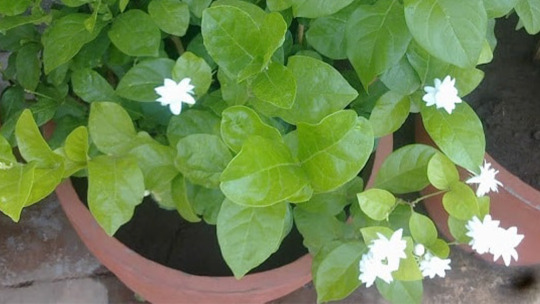
Soil
Arabian jasmine plants prefer to grow in loose, loamy, well-drained soil with some organic matter content mostly prefers to grow in acidic to slight acidic soil of pH of 4.5 to 6.9.
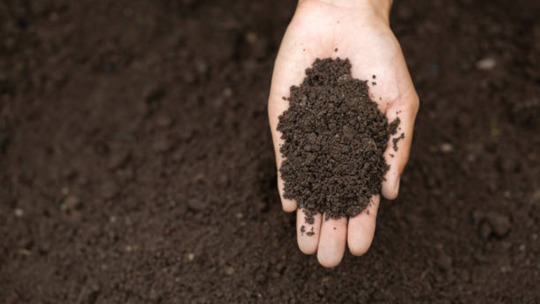
Sunlight
This plant requires ample of sun light i.e. is direct sun light of 4-6 hours. It can also tolerate in shade.

Temperature
Ideal temperature for Arabian jasmine plant is 85-90 degree Celsius during day time & in night time 70-80 degree Celsius.
Watering
Moderate to average water application is given. Alternate day water application but not to make the soil soggy & wet. Because overwatering may lead to root rot diseases. Avoid watering in winter seasons(November-December).
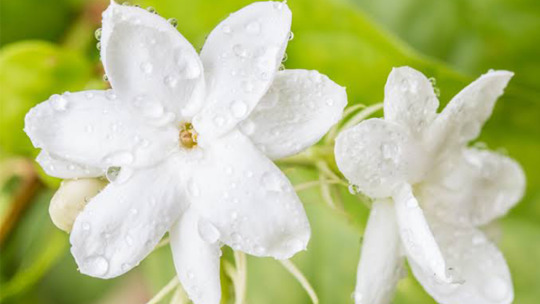
Fertilizer
Application of organic fertilizer such as vermicompost, cow manure or goat manure, Groundnut cake powder for nitrogen enhancement & to increase soil fertility.
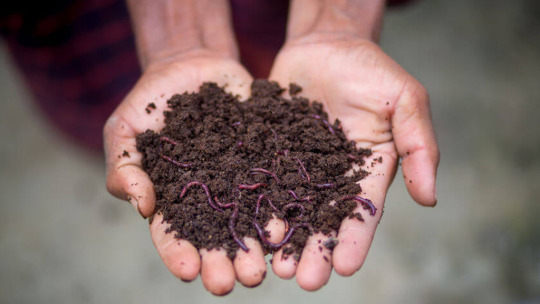
Organic fertilizer for pest attack
Application of Neem oil, Bio-Npk, Steamed bone meal once in three months. Not to over fertilize the plants. Application of organic fertilizer given only in required quantity. Prefer to grow plants by using organic fertilizer.
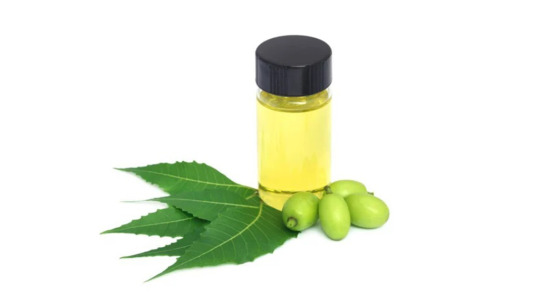
Repotting
This plant does not like to grow in too large pot, because it may lead to water stagnation. Select the pot of 3-4’’and once if the plant grows large. Transfer the plants to big size pot compared to last one but most importantly not to damage the roots.
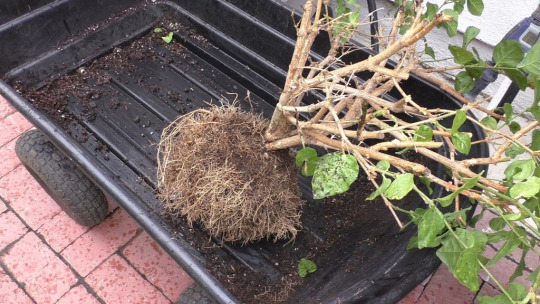
Pruning:
Prune the Arabian jasmine plants in winter, because flower blooming will be less compared to other seasons.Trim the old, diseased and matured plant parts to encourage fast growth in plants.

Harvest:
To get fresh flower yield, fully developed & unopened flower buds are hand-picked in the early morning or late evening. Probably harvesting time starts from 6 months after planting.
Life time of Jasmine plant:

Yield:
Expected average yield of about 800-900 kg of flowers per acre. In houseplant we can expect about 1kg of flower yield.
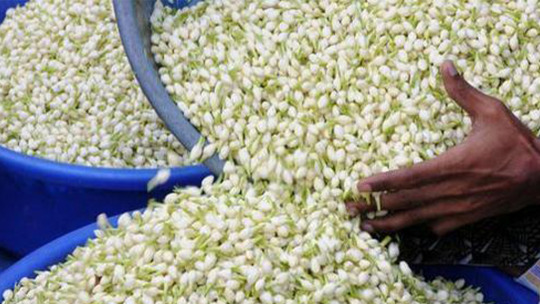
All and above grow plants good and healthy by using organic & traditional method of practices to grow plants. Go green and make our environment clean & green.
Blog compiled by : Santhionlineplants
#ARABIAN JASMINE#Arabian Jasmine flowers are king of fragrant flowers. Jasmine are of more than 200+ varieties around the world. But Arabian jasmine occupie#Jasmine flower#Arabian jasmine flower#This Arabian jasmine flowers are bright white#double layered#tubular#lobed oval flowers contain 9 to 10 petals has sweet & strong fragrance throughout your garden. Flowers contains two stamens with very short#Arabian jasmine plant#Like all jasmine plant varieties#this plant is perennial evergreen with thin woody branches. Arabian jasmine plants are small shrubs with lush foliage. And its climber vine#grows healthy & excellent in all climatic conditions of India.#Arabian jasmine flower plant#Jasminum sambac#Arabian jasmine flower has scientific name Jasminum sambac spreads rapidly as shrub or veins with upright habits. Jasminum sambac is popula#jasminum sambac#How to grow Arabian jasmine#Arabian jasmine plants are considered as‘megastar of garden’. This can grow well in garden areas such as home garden & terrace garden. This#pots or any suitable container.#Flower farmer’s most cultivated plants are Arabian jasmine plants with high yield & it is most suitable for scent preparation purposes.#arabian jasmine growth#Soil#Arabian jasmine plants prefer to grow in loose#loamy#well-drained soil with some organic matter content mostly prefers to grow in acidic to slight acidic soil of pH of 4.5 to 6.9.#soil#Sunlight#This plant requires ample of sun light i.e. is direct sun light of 4-6 hours. It can also tolerate in shade.#Temperature#Ideal temperature for Arabian jasmine plant is 85-90 degree Celsius during day time & in night time 70-80 degree Celsius.
12 notes
·
View notes
Text
🌱🚢 Shipment Arrangement of #HumxFulvic (Fulvic Acid 70% Powder) 📦 packed in 25kg kraft paper bags, ready to be delivered to our global partners! 🌍✅
youtube
💛 Product Name: HumxFulvic (Fulvic Acid 70%) 📌 Appearance: Yellow Powder 📌 Fulvic Acid (dry basis): 70% 📌 Water Solubility: 100% 📌 Moisture: ≤5% 📌 Size: 80-100 mesh 📌 pH: 5-7 📄 More info: https://www.ihumico.com/fulvic-acid-70/
🌾 APPLICATION Soil Amendment: HumxFulvic is a fantastic soil conditioner. When added to the soil, it helps improve soil structure, increasing its porosity and aeration. This allows roots to grow more freely, access nutrients better, and improves water - holding capacity. Whether you're dealing with sandy, clayey, or loamy soils, HumxFulvic can work wonders. Foliar Spray: Dilute HumxFulvic in water and use it as a foliar spray. This enables plants to absorb nutrients directly through their leaves, providing a quick boost of essential elements. It's especially useful during periods of high nutrient demand, such as flowering or fruiting. Fertilizer Blending: Incorporate HumxFulvic into your custom - made fertilizers. Its high fulvic acid content can enhance the performance of other fertilizers, improving nutrient uptake and utilization by plants. You can mix it with nitrogen, phosphorus, potassium - based fertilizers or other organic amendments for a well - rounded nutrient solution. Hydroponics: In hydroponic systems, where precise nutrient control is crucial, HumxFulvic fits right in. Its water - solubility and balanced nutrient profile make it an excellent addition to hydroponic nutrient solutions, promoting healthy plant growth without the need for soil.
💡 BENEFITS & ADVANTAGES ✅ High Fulvic Content: 70% dry basis for stronger chelation and performance ✅ 100% Water Soluble: Easy application in irrigation & foliar spray systems ✅ Boosts Plant Immunity: Enhances stress resistance and crop yields ✅ Increases Nutrient Uptake: Chelates nutrients like NPK + micronutrients ✅ Eco-Friendly & Organic: Supports sustainable and organic agriculture ✅ Fast Absorption: Small molecule structure for quick plant assimilation ✅ Soil Activator: Improves microbial activity and root development ✅ Stable pH: Ideal for various soils with pH 5–7
🛠️ OUR SERVICES 🎯 OMRI & ISO Certified 🎯 OEM & ODM Support 🎯 Free Samples Available 🎯 Custom Packaging & Blank Brand Services
#FulvicAcid #Shipment #OrganicFertilizers
1 note
·
View note
Text
How can our machine help foreign customers develop organic fertilizer production lines?
With the development of global agriculture in the direction of green and sustainable, the demand for organic fertilizers is growing, and many foreign customers have begun to invest in fertilizer production lines. As a professional manufacturer of organic fertilizer machine, our machine with efficient, intelligent and environmentally friendly characteristics, to help customers successfully establish a modern production line, enhance market competitiveness.
1. Provide complete fertilizer production line solutions to meet different needs
We provide foreign customers with a full range of fertilizer production lines from raw material treatment, fermentation, granulation to packaging. Whether it is a small or medium-sized factory or a large-scale production, we can tailor the right machine configuration according to the actual needs of customers to ensure the efficient operation of the production line.
2. Efficient fertilizer granulator to improve product quality
Fertilizer granulator is the core machine of organic fertilizer production, which determines the quality and shape of the finished fertilizer. Our disk granulator, roller extrusion granulator and other machine can produce uniform particles, high strength fertilizer, improve market competitiveness. At the same time, the granulator is simple to operate, low energy consumption, and reduces the production cost of customers.
3. Adapt to different raw materials and improve market flexibility
The raw materials used by foreign customers are different, such as livestock manure in Europe, palm residue in Southeast Asia, and crop straw in South America. Our NPK fertilizer production line can adapt to a variety of raw materials, support the production of organic fertilizers, compound fertilizers, biological fertilizers and other products, and help customers develop a variety of products according to local resources to capture more market share.
4. Meet environmental standards, help customers easily pass the audit
Our machine meets international environmental requirements, such as EU CE certification and US EPA standards, and uses energy efficient motors, dust collection systems and low noise design to reduce pollution emissions. This makes it easier for customers to obtain local environmental approvals and start production smoothly.
5. Global service to ensure customers worry-free production
We not only provide the machine, but also provide installation and commissioning, operational training and remote technical support to ensure that customers can get into production quickly. At the same time, our after-sales team is ready to provide customers with solutions to ensure the long-term stable operation of the production line.
#organic fertilizer production line#disc granulator#fertilizer granulator#drum screener machine#granular organic fertilizer production line#organic fertilizer granulator
0 notes
Photo

Myrrhis odorata Sweet cicely, Myrrhis odorata, is an aromatic perennial herb in the Apiaceae or carrot family with edible flowers, leaves, roots, seeds, and stems. The only species in the Myrrhis genus, sweet cicely, aka anise root, sweet chervil, and myrrh, has a long history of medicinal use and is not to be confused with the Biblical aromatic myrrh, Commiphora myrrha. We link to vendors to help you find relevant products. If you buy from one of our links, we may earn a commission. Nor is it to be mistaken for Clayton’s sweetroot or hairy sweet cicely, Osmorhiza claytonii, a US native wildflower with similarly flavored edible seeds, roots, and leaves. Sweet cicely is suited to cultivation in USDA Hardiness Zones 3 to 7 where it can spread quite aggressively via self-sowing unless you take care to harvest the seeds. Read on to learn how to grow and care for sweet cicely, M. odorata, in the home garden. Here’s what we’ll cover: M. odorata has a long taproot and a bushy, upright growth habit. Mature dimensions are three to six feet wide and two to five feet tall. The foliage is finely serrated, fernlike, hairy, and soft. The leaves sometimes have silvery-white coloration splashed across them. Flattened clusters or umbels of creamy white blossoms perch atop stems in late spring to summer. Long green pods open to reveal shiny, dry black seeds in the fall. All parts of the sweet cicely plant have a strong, sweet anise or licorice-like flavor. Quick Look Common name(s): Sweet cicely, anise root, sweet chervil, myrrh Plant type: Herbaceous perennial Hardiness (USDA Zone): 3-7 Native to: Central and southern Europe Bloom time / season: Late spring, early summer Exposure: Full sun to part shade Soil type: Organically-rich, well draining Soil pH: 4.5-7.4, acidic to neutral Time to maturity: 120 days Spacing: 24 inches Planting depth: 1/2 inch (seeds), same depth as container (transplants) Mature size: 2-5 feet wide x 3-6 feet high Water Needs: Moderate Taxonomy Order: Apiales Family: Apiaceae Genus: Myrrhis Species: Odorata The leaves taste best when the flower stems are removed before budding to direct energy into foliage production. They are brewed for tea, cooked as a side dish, served as a garnish or addition to salads, or infused into oils or liqueurs. The crushed seeds are a flavorful spice for baked goods. The roots are easy to prepare in a similar way as carrots or parsnips. Native to central and southern Europe, sweet cicely plants grow wild in hedgerows, woodland clearings, and roadbeds. They have a history of use by herbalists to stimulate the appetite and suppress coughs. Please note that foraging for M. odorata is not recommended, as several poisonous lookalike plants are found in various regions, including hemlock, Conium maculatum. How to Grow This herb is easy to grow and as mentioned, it can spread aggressively, so choose a location carefully, or be sure to remove seed pods to prevent self-sowing. Light Sweet cicely needs a full-sun to part-shade location. Afternoon shade is ideal, especially in warmer locales. Soil The soil should be organically rich and well-draining. The herb tolerates a wide pH range of between 4.5 and 7.4. Conduct a soil test to determine your soil’s pH and nutrient content. The addition of compost can increase acidity and well-rotted manure increases alkalinity; both amendments enrich the soil with nutrients. Water Sweet cicely likes moisture, so water weekly in the absence of rain and often during dry spells. Use a moisture meter as a guide and don’t let the ground or potting soil become completely dry. Fertilizing Fertilizer is not usually required unless your soil is severely depleted and in that case, use the results of your soil test to determine how to amend it. If you fertilize, wait for transplants to put on new leaves, and use a slow-release, granular product with a 5-10-10 NPK. A higher nitrogen content will likely result in an overabundance of leaves and fewer flowers. Feed established perennials annually in early spring. Companion Planting Interplant with flora of similar cultural requirements, such as alliums, carrots, chervil, chives, fennel, parsley, and rhubarb, to contribute to landscape diversity and attract beneficial pollinators. Weed the garden regularly to prevent competition for moisture and nutrients, promote air circulation, and inhibit pests. Where to Buy If you haven’t got a gardening friend with pods ready to ripen, you’ll need to find a reputable source of seeds. You can sometimes find them in your local garden center or nursery, otherwise look online. Sweet Cicely Seeds Sweet cicely seeds in packets of 20 are available from Plant Good Seed via Amazon. Propagation To start plants, you’ll need seeds or root divisions. Let’s discuss both propagation methods. From Seed Fresh, viable seeds take about 42 days to germinate and 120 days to mature. Photo by Cephas, Wikimedia Commons, via CC BY-SA. Sweet cicely seeds need to be cold stratified before they’ll germinate. If you harvest seeds from existing plants in the fall, you can sow them immediately and allow the stratification to happen naturally. To do this, work the soil to a depth of 10 to 12 inches, until it’s crumbly and free from debris. Sow seeds half an inch deep and 24 inches apart. Alternatively, you can start seeds indoors. You’ll need to cold stratify them for 12 weeks and sow them in seed starter cells about eight weeks before your last average frost date. To cold stratify, put the seeds in a zip-top bag with moistened peat moss and keep them in the refrigerator. Don’t allow the peat moss to dry out. After 12 weeks, prepare a seed-starting tray or containers with moistened potting soil. Sow two seeds in each cell about half an inch deep and an inch apart. Place starter trays in bright indirect sunlight and keep the soil moist but not soggy. When the seedlings have two sets of true leaves, prick out the weaker seedling and continue to keep the medium moist. After the last average frost date passes you can harden off the seedlings over the course of a week before transplanting. By Root Division Mark the location(s) of your plants. In early spring, after the last average frost date passes, and before new foliage sprouts, dig up the plants you want to divide. Use your foot to press a long-handled garden fork into the soil about eight inches from a clump of foliage. Dig and lift around it, 12 to 18 inches deep, to unearth the tap root. Use sanitary shears to cut the taproot into sections. Ideally, each section will have one or more root nodes, aka “eyes,” and side feeder roots. Replant the divisions about two inches deep, with the nodes facing upwards. Transplanting When transplanting seedlings, divisions, or nursery starts, prepare the soil to a crumbly consistency to a depth of 10 to 12 inches. Set the transplants at the same depth as in their original containers, with at least 24 inches between them. Tamp the soil to secure them in place and water well. Pests and Disease Sweet cicely is not prone to pests or disease. By keeping the garden free from weeds, watering at soil level instead of on the foliage, and maintaining adequate spacing between plants, you’ll likely not experience any issues. A disease you may encounter is gall-forming rust fungus, caused by Puccinia chaerophylli. Symptoms include yellow spots on the foliage followed by orangish pustules. Treatment with sprays of neem oil may be effective. Harvesting You can harvest the leaves and stems throughout the growing season. Young, tender leaves and stems are perfect for raw culinary applications, including for brewing as tea, while more mature foliage is better when it’s cooked. You can dig up some first-year plants at season’s end to eat the tender roots as well. Use the flowers as lovely garnishes and pick the unripe green pods to chew as a handy breath freshener. Harvest the ripe black seeds to sow new plants or use in culinary applications. Preserving Store harvested dry seeds in airtight jars in a cool, dark, dry place. Sow them as soon as possible to ensure viability. Or, store them for two to three years for culinary use. The leaves and stems lose flavor when dried, but if you want to, you can harvest a bouquet of leafy stems, bind them together with string, and suspend the bundle from a hook in a warm, dry, airy location until they are brittle. Then, break the leaves and stems into bits and store them in airtight jars. They should remain fresh and flavorful for several months. Fragrant, Toothsome Sweet Cicely Sweet cicely is a low-maintenance perennial herb that likes morning sun and moist, well-draining soil. It tolerates a range of soil acidity and shares the garden companionably with plants that have similar cultural requirements. Its roots, seeds, stems, leaves, and flowers have a refreshing aroma and flavor similar to anise or licorice. Do you grow sweet cicely? Please tell us how it performs in your growing Zone and how you enjoy it. If you found this article informative and want to read about more perennial aromatic herbs, we recommend the following: © Ask the Experts, LLC. ALL RIGHTS RESERVED. See our TOS for more details. Product photo via the Plant Good Seed Store. Uncredited photos: Shutterstock. !function(f,b,e,v,n,t,s) if(f.fbq)return;n=f.fbq=function()n.callMethod? n.callMethod.apply(n,arguments):n.queue.push(arguments); if(!f._fbq)f._fbq=n;n.push=n;n.loaded=!0;n.version='2.0'; n.queue=[];t=b.createElement(e);t.async=!0; t.src=v;s=b.getElementsByTagName(e)[0]; s.parentNode.insertBefore(t,s)(window, document,'script', ' fbq('init', '176410929431717'); fbq('track', 'PageView'); Source link
0 notes
Photo

Myrrhis odorata Sweet cicely, Myrrhis odorata, is an aromatic perennial herb in the Apiaceae or carrot family with edible flowers, leaves, roots, seeds, and stems. The only species in the Myrrhis genus, sweet cicely, aka anise root, sweet chervil, and myrrh, has a long history of medicinal use and is not to be confused with the Biblical aromatic myrrh, Commiphora myrrha. We link to vendors to help you find relevant products. If you buy from one of our links, we may earn a commission. Nor is it to be mistaken for Clayton’s sweetroot or hairy sweet cicely, Osmorhiza claytonii, a US native wildflower with similarly flavored edible seeds, roots, and leaves. Sweet cicely is suited to cultivation in USDA Hardiness Zones 3 to 7 where it can spread quite aggressively via self-sowing unless you take care to harvest the seeds. Read on to learn how to grow and care for sweet cicely, M. odorata, in the home garden. Here’s what we’ll cover: M. odorata has a long taproot and a bushy, upright growth habit. Mature dimensions are three to six feet wide and two to five feet tall. The foliage is finely serrated, fernlike, hairy, and soft. The leaves sometimes have silvery-white coloration splashed across them. Flattened clusters or umbels of creamy white blossoms perch atop stems in late spring to summer. Long green pods open to reveal shiny, dry black seeds in the fall. All parts of the sweet cicely plant have a strong, sweet anise or licorice-like flavor. Quick Look Common name(s): Sweet cicely, anise root, sweet chervil, myrrh Plant type: Herbaceous perennial Hardiness (USDA Zone): 3-7 Native to: Central and southern Europe Bloom time / season: Late spring, early summer Exposure: Full sun to part shade Soil type: Organically-rich, well draining Soil pH: 4.5-7.4, acidic to neutral Time to maturity: 120 days Spacing: 24 inches Planting depth: 1/2 inch (seeds), same depth as container (transplants) Mature size: 2-5 feet wide x 3-6 feet high Water Needs: Moderate Taxonomy Order: Apiales Family: Apiaceae Genus: Myrrhis Species: Odorata The leaves taste best when the flower stems are removed before budding to direct energy into foliage production. They are brewed for tea, cooked as a side dish, served as a garnish or addition to salads, or infused into oils or liqueurs. The crushed seeds are a flavorful spice for baked goods. The roots are easy to prepare in a similar way as carrots or parsnips. Native to central and southern Europe, sweet cicely plants grow wild in hedgerows, woodland clearings, and roadbeds. They have a history of use by herbalists to stimulate the appetite and suppress coughs. Please note that foraging for M. odorata is not recommended, as several poisonous lookalike plants are found in various regions, including hemlock, Conium maculatum. How to Grow This herb is easy to grow and as mentioned, it can spread aggressively, so choose a location carefully, or be sure to remove seed pods to prevent self-sowing. Light Sweet cicely needs a full-sun to part-shade location. Afternoon shade is ideal, especially in warmer locales. Soil The soil should be organically rich and well-draining. The herb tolerates a wide pH range of between 4.5 and 7.4. Conduct a soil test to determine your soil’s pH and nutrient content. The addition of compost can increase acidity and well-rotted manure increases alkalinity; both amendments enrich the soil with nutrients. Water Sweet cicely likes moisture, so water weekly in the absence of rain and often during dry spells. Use a moisture meter as a guide and don’t let the ground or potting soil become completely dry. Fertilizing Fertilizer is not usually required unless your soil is severely depleted and in that case, use the results of your soil test to determine how to amend it. If you fertilize, wait for transplants to put on new leaves, and use a slow-release, granular product with a 5-10-10 NPK. A higher nitrogen content will likely result in an overabundance of leaves and fewer flowers. Feed established perennials annually in early spring. Companion Planting Interplant with flora of similar cultural requirements, such as alliums, carrots, chervil, chives, fennel, parsley, and rhubarb, to contribute to landscape diversity and attract beneficial pollinators. Weed the garden regularly to prevent competition for moisture and nutrients, promote air circulation, and inhibit pests. Where to Buy If you haven’t got a gardening friend with pods ready to ripen, you’ll need to find a reputable source of seeds. You can sometimes find them in your local garden center or nursery, otherwise look online. Sweet Cicely Seeds Sweet cicely seeds in packets of 20 are available from Plant Good Seed via Amazon. Propagation To start plants, you’ll need seeds or root divisions. Let’s discuss both propagation methods. From Seed Fresh, viable seeds take about 42 days to germinate and 120 days to mature. Photo by Cephas, Wikimedia Commons, via CC BY-SA. Sweet cicely seeds need to be cold stratified before they’ll germinate. If you harvest seeds from existing plants in the fall, you can sow them immediately and allow the stratification to happen naturally. To do this, work the soil to a depth of 10 to 12 inches, until it’s crumbly and free from debris. Sow seeds half an inch deep and 24 inches apart. Alternatively, you can start seeds indoors. You’ll need to cold stratify them for 12 weeks and sow them in seed starter cells about eight weeks before your last average frost date. To cold stratify, put the seeds in a zip-top bag with moistened peat moss and keep them in the refrigerator. Don’t allow the peat moss to dry out. After 12 weeks, prepare a seed-starting tray or containers with moistened potting soil. Sow two seeds in each cell about half an inch deep and an inch apart. Place starter trays in bright indirect sunlight and keep the soil moist but not soggy. When the seedlings have two sets of true leaves, prick out the weaker seedling and continue to keep the medium moist. After the last average frost date passes you can harden off the seedlings over the course of a week before transplanting. By Root Division Mark the location(s) of your plants. In early spring, after the last average frost date passes, and before new foliage sprouts, dig up the plants you want to divide. Use your foot to press a long-handled garden fork into the soil about eight inches from a clump of foliage. Dig and lift around it, 12 to 18 inches deep, to unearth the tap root. Use sanitary shears to cut the taproot into sections. Ideally, each section will have one or more root nodes, aka “eyes,” and side feeder roots. Replant the divisions about two inches deep, with the nodes facing upwards. Transplanting When transplanting seedlings, divisions, or nursery starts, prepare the soil to a crumbly consistency to a depth of 10 to 12 inches. Set the transplants at the same depth as in their original containers, with at least 24 inches between them. Tamp the soil to secure them in place and water well. Pests and Disease Sweet cicely is not prone to pests or disease. By keeping the garden free from weeds, watering at soil level instead of on the foliage, and maintaining adequate spacing between plants, you’ll likely not experience any issues. A disease you may encounter is gall-forming rust fungus, caused by Puccinia chaerophylli. Symptoms include yellow spots on the foliage followed by orangish pustules. Treatment with sprays of neem oil may be effective. Harvesting You can harvest the leaves and stems throughout the growing season. Young, tender leaves and stems are perfect for raw culinary applications, including for brewing as tea, while more mature foliage is better when it’s cooked. You can dig up some first-year plants at season’s end to eat the tender roots as well. Use the flowers as lovely garnishes and pick the unripe green pods to chew as a handy breath freshener. Harvest the ripe black seeds to sow new plants or use in culinary applications. Preserving Store harvested dry seeds in airtight jars in a cool, dark, dry place. Sow them as soon as possible to ensure viability. Or, store them for two to three years for culinary use. The leaves and stems lose flavor when dried, but if you want to, you can harvest a bouquet of leafy stems, bind them together with string, and suspend the bundle from a hook in a warm, dry, airy location until they are brittle. Then, break the leaves and stems into bits and store them in airtight jars. They should remain fresh and flavorful for several months. Fragrant, Toothsome Sweet Cicely Sweet cicely is a low-maintenance perennial herb that likes morning sun and moist, well-draining soil. It tolerates a range of soil acidity and shares the garden companionably with plants that have similar cultural requirements. Its roots, seeds, stems, leaves, and flowers have a refreshing aroma and flavor similar to anise or licorice. Do you grow sweet cicely? Please tell us how it performs in your growing Zone and how you enjoy it. If you found this article informative and want to read about more perennial aromatic herbs, we recommend the following: © Ask the Experts, LLC. ALL RIGHTS RESERVED. See our TOS for more details. Product photo via the Plant Good Seed Store. Uncredited photos: Shutterstock. !function(f,b,e,v,n,t,s) if(f.fbq)return;n=f.fbq=function()n.callMethod? n.callMethod.apply(n,arguments):n.queue.push(arguments); if(!f._fbq)f._fbq=n;n.push=n;n.loaded=!0;n.version='2.0'; n.queue=[];t=b.createElement(e);t.async=!0; t.src=v;s=b.getElementsByTagName(e)[0]; s.parentNode.insertBefore(t,s)(window, document,'script', ' fbq('init', '176410929431717'); fbq('track', 'PageView'); Source link
0 notes